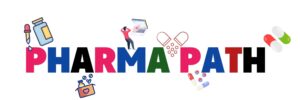| Sampling and testing of water |
1.0 OBJECTIVE To lay down procedure for sampling and testing of water for chemical analysis. 2.0 SCOPE This SOP is applicable for sampling and testing of water for chemical analysis in quality control department. 3.0 RESPONSIBILITY QC – Officer/ Sr. Officer / Executive/Sr. Executive and above. 4.0 ACCOUNTABILITY Head-QC 5.0 PROCEDURE 5.1 Sampling of Pure Steam: 5.1.1 Sample for chemical analysis should be collected in dried and clean bottle. 5.1.2 Remove the cap from the bottle just prior to obtaining the sample. 5.1.3 While sampling avoid direct contact to the mouth of bottle. 5.1.4 Drain steam approximately for 1 minute from the sampling point prior to sampling. 5.1.5 While sampling wear the gloves and open the sampling valve slowly so that the steam is converted in to condensate. 5.1.6 Take the holder and hold the sampling bottle from the neck of the bottle. 5.1.7 Take the sampling bottle and collect the condensate. 5.1.8 Rinse the bottle with the water at least 3 times. 5.1.9 Do not allow the bottle or the water in the bottle to come in contact with the valve. 5.1.10 For TOC analysis take the sample in the separate TOC vials/Bottle collect the sample by over flowing the vials/Bottle and close the lid immediately. 5.2 Sampling of Raw Water, Soft Water, Chlorinated water, Dechlorinated water, Multi-Grade Filter water, RO Water, Purified water, Water for injections: 5.2.1 Collect water from different sampling point as per sampling schedule and perform the tests as per specification. 5.2.2 In the locations where hosepipes are connected to user-point, samples will be drawn from the end of the hosepipe 5.2.3 Take clean screw cap bottle of 1000 ml capacity for each sampling point. 5.2.4 Open the valve of sampling point at maximum flow and allow the water to run for about one minute. 5.2.5 Open the cap of the bottle, and hold the sampling bottle under the sampling point and fill it up to the neck of the bottle and close the sampling bottle and close the sampling valve. 5.2.6 After collecting the sufficient sample, label the container with following details: Name of Sample Sampling point no. Date of sampling Sampled by 5.2.7 Bring the samples in the laboratory and make entry in water sampling inward format no. XXX. 5.2.8 Generate A.R. Number as following System as given below. WSXXYY0000 Where WS is for Water Samples (Chemical) XX is Stands for last two digit of the Current Year. YY is Stands digit of the Current Month. 0000 is Serial Number in the Increasing Order (e.g. 0001, 0002, 0003…… 9999.) (e.g. WS23090001) 5.2.9 Perform the chemical analysis as per respected STP and record in respective worksheet. 5.3 Follow some special instructions mentioned below, during sampling of waters: 5.3.1 Ensure that the sampling points have been labelled properly. 5.3.2 Ensure that the system is under operation (both generation and circulation systems). 5.3.3 S.S. Tongue shall be used for sampling of water for injections. 5.3.4 Perform the sampling from the hose pipe or any other delivery device if it is used during routine usage of water. 5.3.5 If the bottle containing sample breaks, while transit or while performing the analysis invalidate the test and collect the sample on the same day or the next day. 5.3.6 Sampling & testing shall be done as per approved schedule. 6.0 ABBREVIATIONS SOP – Standard Operating Procedure No. – Number QA – Quality Assurance QC – Quality control A.R – Analytical Report RO – Reverse Osmosis TOC – Total Organic Carbon S.S – Stainless Steel |

Thaks for Information ℹ️